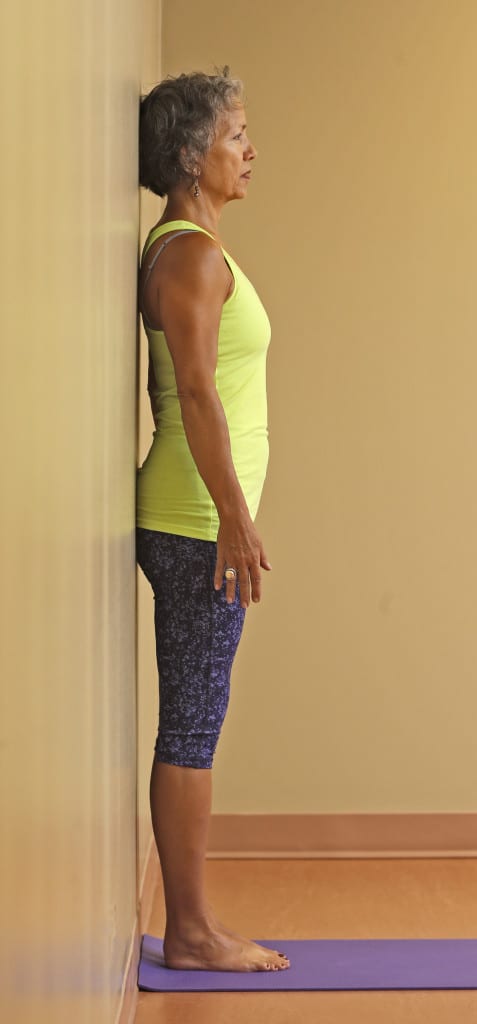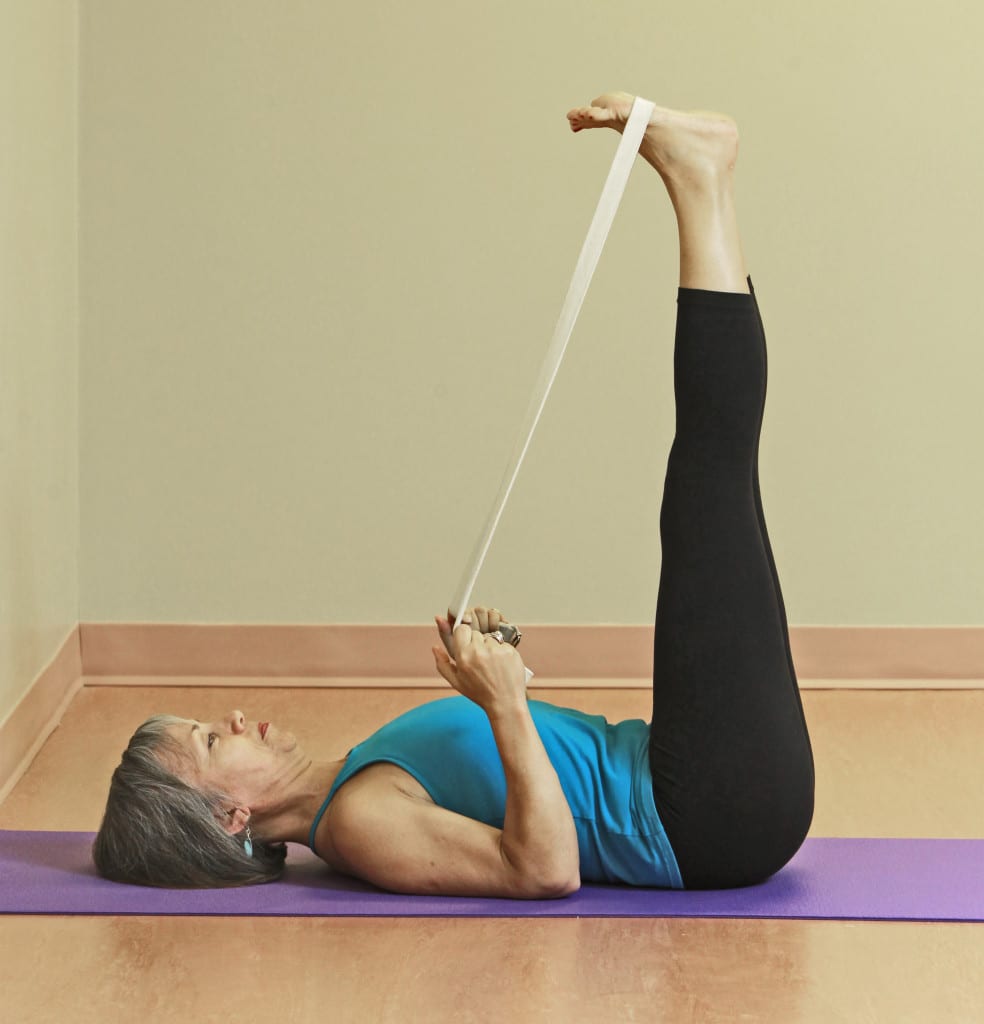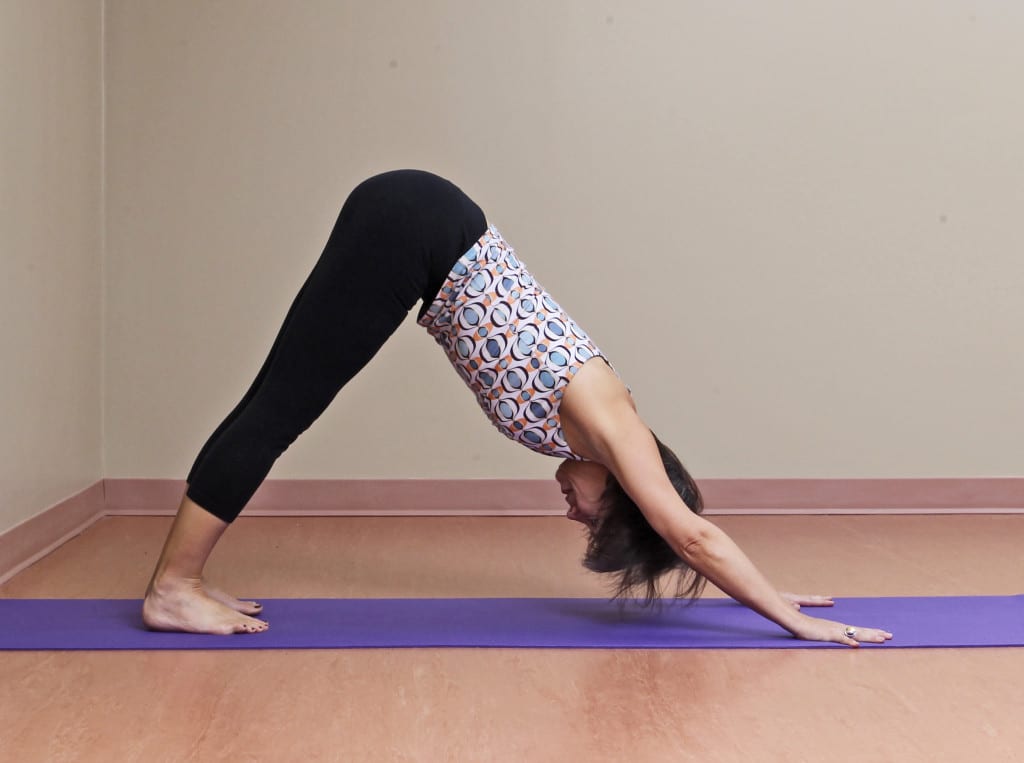Yoga practitioners often hear from their teachers, “You are only as old as your spine is inflexible.” Body and energy workers would agree that the more supple your spine, the healthier and more youthful your overall constitution.
The key to a youthful spine is to keep its entire length elongated, while forming its natural “S“ shape, no matter what activity you experience. The first step is always self-awareness and becoming aware of the three parts of the spine — lumbar, thoracic and cervical — is most helpful in understanding where tension and tightness exist and where greater flexibility resides.
The largest spinal vertebrae are located in the lumbar region — L1 to L5 — from the bottom of the ribcage to the top of the sacrum. These vertebral joints sustain considerable weight, effort and stress, particularly when poor posture promotes overarching (lordosis) or flattening of the lower back.
As you can see in the pose to the left, the lumbar spine curves into the body.
Moving up the spine, the thoracic vertebrae — T1 to T12 — are medium-sized and curve outward from the base of the neck to the bottom of the ribcage. The ribs and thoracic spine support the breastbone, collar bones and breathing muscles; all of which protect our heart, liver and lungs. Excessive rounding (kyphosis)of the thoracic inhibits breathing, which is why your lungs fill easier when you allow the thoracic to softly release into the body.
Finally, the cervical vertebrae — C1 to C7 — curve in from the base of the skull to the protruding notch at the base of the neck. They are the smallest, most specialized and most fragile vertebrae. As the structural support for our neck, the cervical spine backs this main passage for the respiratory and digestive systems, veins and arteries, including many muscles. Arthritis in these vertebrae is painful with joint inflammation greatly impacting breathing, swallowing and circulation to the brain.
A healthy mobile spine depends on healthy shock absorbers — discs located between the vertebrae. Yoga asanas create space between the vertebrae, which allows these discs to soak up nutrients from the surrounding tissues. Poor posture compresses these discs, depriving our organs of oxygen and leading to disc damage. An aligned spine receives the oxygen needed for our organs, etc., to function properly, which is why you may have noticed a deeper sense of clarity or a reduction of fuzzy thinking, confusion or fatigue after a yoga practice.
On a daily basis, the spine goes through these four movements:
- Extension — reaching for something on a shelf
- Flexion — bending over to lift something
- Twisting — getting out of a car
- Side-bending — sweeping the floor
Fortunately, yoga asanas emphasize these movements encouraging optimal spinal health. If you have arthritis of any kind, choose poses that gently and mindfully take your spine through the full range of all four motions.
Action: Find and maintain the natural “S” curves of your spine by lining up the back of your sacrum with your shoulder blades and the back of your head. For more advanced practitioners, shift your inner body weight, breath and awareness to the back of your sacrum, heart space and head.

TADASANA (Mountain pose)
Stand with your back to the wall. Feel your sacrum, shoulder blades and the back of your head resting against the wall. NOTE: Do not force the back of your head to the wall. Instead, work on lengthening your spine, especially the thoracic and cervical sections, until your head naturally graces the wall. Sense the inward curves of the lumbar and cervical spines, and the outward curve of the thoracic spine. Breathe along the curves of your spine.

SUPTA PADANGUSTHASANA both legs (Lying Down Hamstring Stretch)
Lie down and feel the back of your sacrum, your shoulder blades and the back of your head resting on the floor. NOTE: If your head rests more to the crown and your chin lifts to the ceiling, place a folded towel under your head until your chin is perpendicular to the floor. Feel how your lumbar and cervical spine lift away from the floor while the thoracic gently releases into the body.

ADHO MUKHA SVANASANA (Downward Facing Dog)
Start from hands and knees. Tuck your toes under and lift your hips toward the ceiling as you straighten your legs. Recapture the feeling of your spine from the previous two poses to find the natural curves in downward dog.
For more information, refer to Creating Space: Yoga Actions for Torso & Spine.





